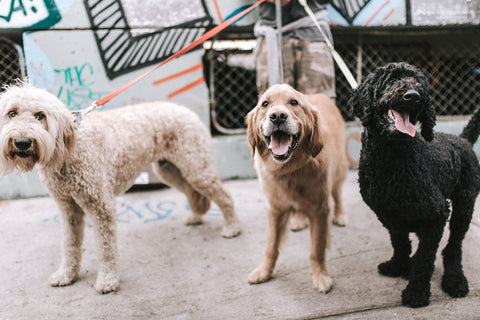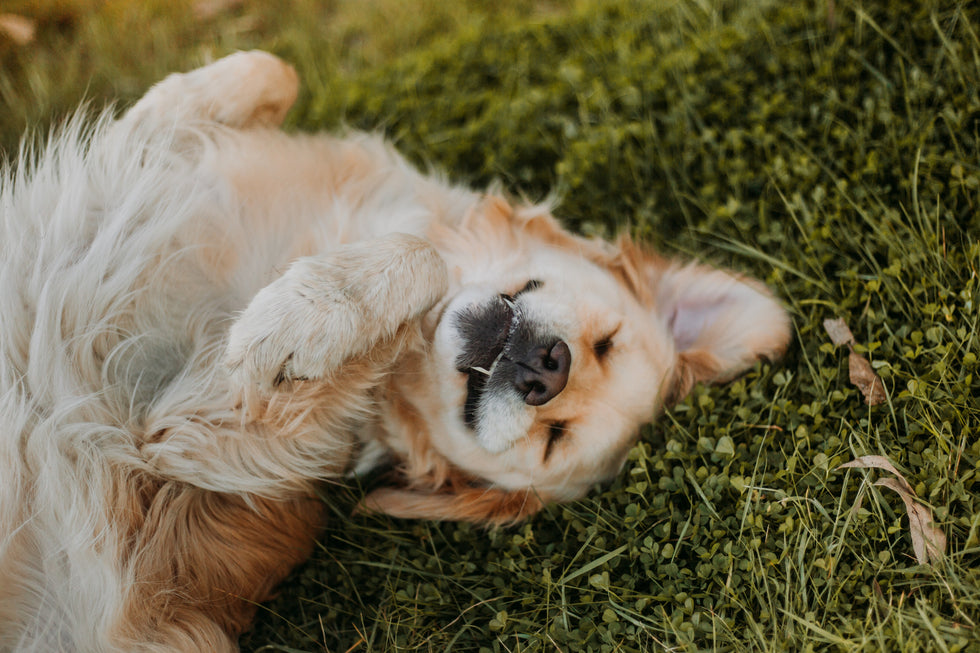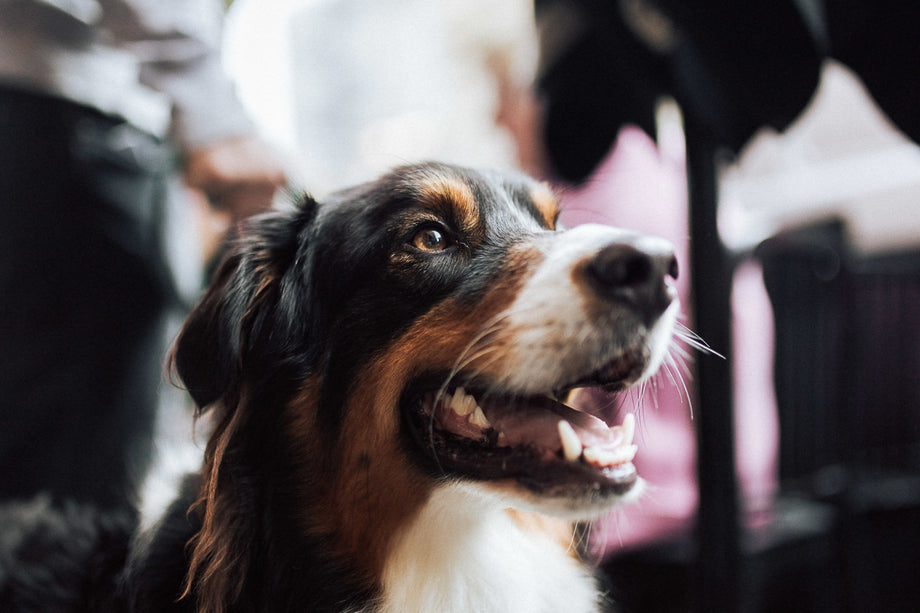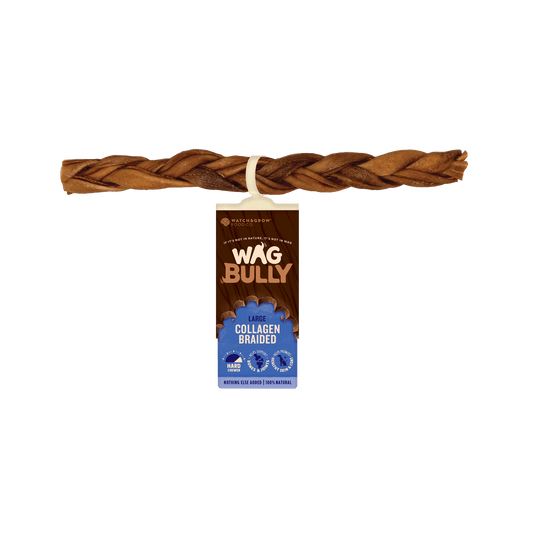For some pet parents, being covered in dog hair as soon as they walk through the door is the norm. Little tumbleweeds of hair can collect in the corners of the rooms, or you might keep a lint roller by the front door for a quick once-over before you leave the house each morning.
The fact is, many dog breeds shed - it's practically written into doggy DNA! Shedding is a natural process, and is usually quite normal. But that doesn't mean it can't be quite mystifying (and frustrating!) for dog owners.
But why do dogs shed? How on earth do they manage to lose so much hair and still flaunt a seemingly endless coat of fluffiness? It’s time to roll up our sleeves and dig deep into this hairy mystery.
Why do dogs shed?
In short, dogs shed hair to get rid of old and damaged fur.
Some dog breeds experience seasonal shedding, typically as it moves from winter into spring and summer. They have a summer coat and a winter coat, and shed the extra fur to help keep their cool in the warmer months!
The breed of a dog plays a big part in how much they shed. It may sound counterintuitive, but dogs with longer coats generally shed less than dogs with short coats.
The overall health of a dog can also affect how much they shed, as sick dogs may shed more heavily. Hormonal changes can also lead a dog to shed more, such as after giving birth.
Oh, but the shedding surprises dont end there! Stress, skin issues and even allergic reactions can cause excessive shedding.

The dog shedding cycle
Shedding is part of the natural hair growth cycle for your pooch. So don’t worry - its totally natural! It’s your dog’s way of saying ‘out with the old, and in with the new!’. As they bid farewell to old, damaged and dry fur, they make room for fresh healthy fur thats ready to shine.
The dog shedding cycle typically goes through four phases:
Anagen phase
The anagen phase is the phase of active growth, where the dog's fur grows to the length of a healthy coat. Dog breeds that have continuously growing hair such as poodles have a very long anagen phase in the hair cycle. The hair can grow for a long time before entering the telogen phase, and this is why breeds with long hair need regular grooming. Genetics decide how long the hair follicles remain in each phase of the hair cycle.
Catagen phase
This is the phase in transition from anagen to telogen. This is when the hair follicles receive a signal to stop growing new hair.
Telogen phase
The rest stage when there is no new growth of hair.
Exogen phase
The shedding phase. This is when the old hair is shed, and the hair follicles start to shift back to the anagen phase.
Winter coat blow out
Dogs with double coats and a thick undercoat are usually the ones that shed the most, such as Huskies, Golden Retrievers, Border Collies and German Shepherds. This helps them regulate their body temperature in the warmer weather. The blow out phase is when their coat drastically changes from a winter coat to a summer coat. During this time at the change in season, pet owners of heavy shedders may notice patches of the undercoat peeking through the top coat as the doggo sheds their winter coat.
You might notice your lint roller getting more action, or your vacuum getting more of a workout during this time!

What dogs don't shed?
The truth is, all dogs shed a little. There's no such thing as a completely non-shedding dog.
However, some dog breeds shed so little, it's barely noticeable. Such breeds include:
- Poodle
- Shih Tzu
- Chinese Crested
- Maltese
- Yorkshire Terrier
- Bichon Frise
Regular grooming to help with shedding
There are things you can do to help control your dog's shedding, and to help manage the amount of fur everywhere.
Brush your pooch regularly with a suitable brush. This will allow you to remove any loose hair in a controlled way. For dogs with long coats and double-coated breeds, try a slicker brush. This allows the bristles to reach the undercoat and pull out the loose and dead hairs from beneath.
Give your pup a bath about once a month, but not too often or you can risk getting rid of the precious natural oils from their coat and skin. Regular enough bathing can help contribute to a healthy coat, and maintaining good coat health is important in controlling unnecessary shedding.
Regular professional grooming is essential for long-haired dogs in order to keep their coats healthy and well-maintained - they may not like it at the time, but trust us they will be thankful afterwards for getting the royal treatment!

Nutrition
A poor diet can contribute to excessive shedding. Making sure your dog's nutrition is on point is a good way of keeping their shedding under control.
Tasty tip: Ensure your dog's diet is high in omega-3 oils to help support a healthy coat. A diet consisting of natural, raw foods is a great way of ensuring your dog's nutritional needs are being met, which will benefit their coat and limit unnecessary excessive shedding.
When selecting treats to offer to your furry friend, make sure they are natural and without any nasty fillers or preservatives. Choose treats that are created with skin and coat health in mind, such as our Forage Fish and Functional Jerky for Skin and Coat.

Why is my dog shedding so much hair?
A question many pet parents find themselves asking. But once you understand what is normal in regards to shedding for your pooch, you're in a position to realise when your dog's shedding turns from normal to excessive shedding.
Excessive hair loss can sometimes be a sign of an underlying health condition, such as:
- Parasites e.g. mites, fleas or lice
- Hormonal imbalance
- Bacterial or fungal infection
- Allergies
- Stress
If you are ever concerned about how much your dog is shedding, a trip to the vet can rule out any underlying issues.

Natural dog treats for your dogs coat
It's no secret that diet has a direct impact on the coat health of a pooch, and poor nutrition can lead to heavy shedding. No matter what breed your dog is or the nature of their coat - good quality dog food and treats are key to a luscious and healthy coat that’s read capet worthy!
Here at WAG we pride ourselves on our range of natural dog treats to support your dog's skin, coat and overall health, and get their tails wagging! Shop the range online today or shop a selection of the WAG range in Coles, Woolworths and all major pet specialty stores. It’s treat time baby!
Shop the Recipe
WAG Team
Up Next
The Magic of Zoomies! Why Do Dogs Do Zoomies?





